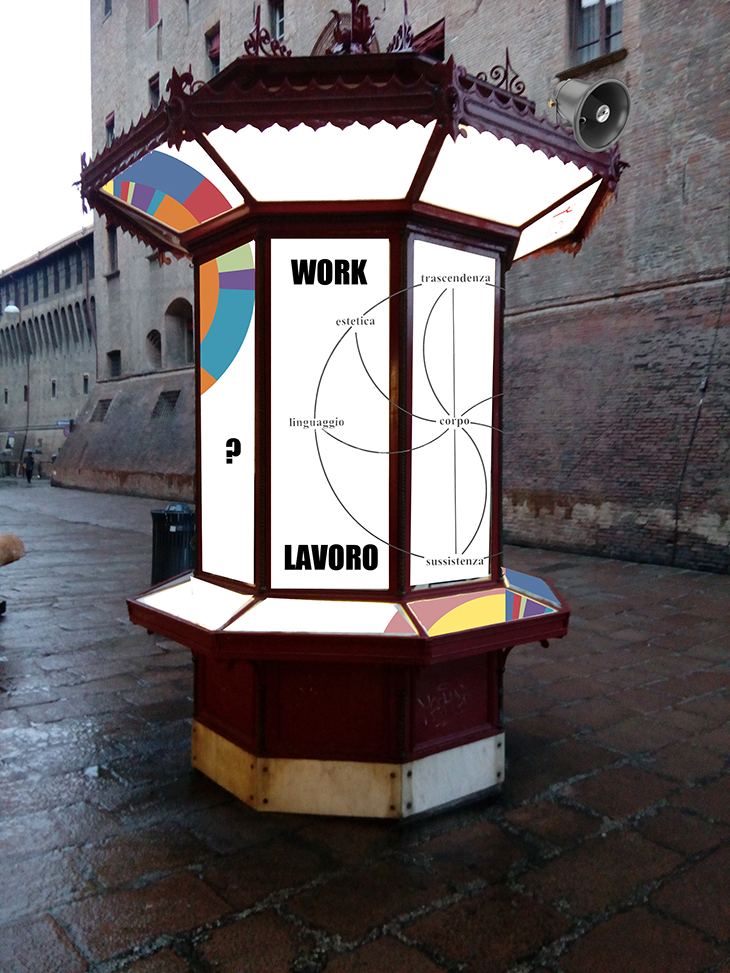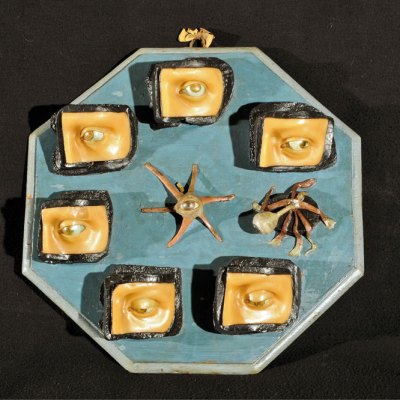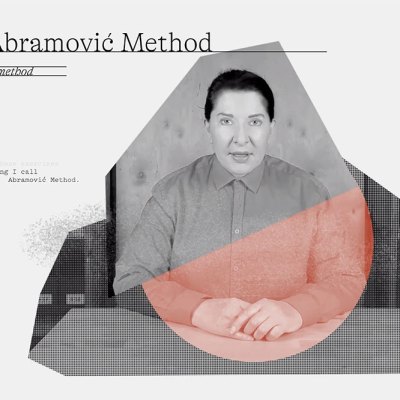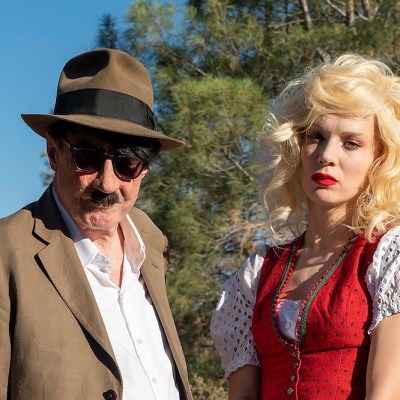It was designed as a life-sized version of snakes and ladders, plastered across Bologna’s central square, Piazza Maggiore. In the artist’s mock-up, some of the board’s green and yellow squares are illustrated with photos of activist spaces, squats and art studios in the city that were at risk of closure in the early noughties. The Italian artist Mili Romano’s 2004 project ‘Torna indietro!’ wanted to criticise urban change in Bologna and the creeping replacement of cultural hubs by shops. But the artwork was never made.
The plans for Romano’s installation were one of 55 pieces in the exhibition ‘Hidden Displays 1975–2020. Unrealised projects in Bologna’, recently shown at the Museo d’Arte Moderna di Bologna (MAMbo). Letters, pencil sketches and paper maquettes laid out plans for works that never came to fruition, be it for ‘technical, logistical, ideological, financial, moral or ethical’ reasons, as the exhibition explained.
Torna Indietro! (2004), Mili Romano. Image courtesy the artist

The unrealised projects in the exhibition were originally collected for the digital museum and online archive MoRE, a Museum of Refused and Unrealised Art Projects. Curators Valentina Rossi and Elisabetta Modena insist that the exhibition and the online museum should not be seen as ‘a parade of failure’, saying that by displaying them, the exhibition intended to play with the uncertain boundary between what defines a project as realised or not. ‘All of the projects here have been thought about, studied and proposed, and [the exhibition gave them] real and physical dimensions in the museum,’ Rossi explains.
For the museum’s founders, digitising unrealised projects ascribes them value, as well as ensuring their preservation for archival and research purposes – something that became even more pertinent during the Covid-19 pandemic. ‘We were ready for the pandemic, because our museum is entirely based around digital projects. In France and the UK, lots of museums already had online spaces, but in Italy, institutions weren’t ready for it. There had been no investment in digitalisation,’ explains Rossi. ‘We really believe that digital spaces can be the future of museums. Of course, they are not a substitute for seeing an exhibition in real life, but they are a great source of research and a good response to how digital our society is now.’
MoRE took inspiration from Hans Ulrich Obrist’s book of 1997 and subsequent exhibition in 2009, ‘Unbuilt Roads’, which collated 107 unrealised projects by major artists. Its founders have also drawn comparisons with the Salon des Refusés in Paris in 1863: an exhibition that showcased thousands of artworks that had been rejected from the Paris Art Fair. But here’s the distinction: while some of the projects in Hidden Displays were made and rejected, many are only proposals, ideas put down in writing but never acted upon.
A series of letters serve as a record of the modern chapter of Bologna’s modern art museum, which was created in 1975 as GAM (Galleria d’Arte Moderna). International and Italian artists have left their traces in the GAM archives, including Paul McCarthy, whose letter from 1977 punctiliously details the props he would be bringing for an upcoming performance, including ‘a hat that fits the head of my penis, a Mexican sombrero’. One name comes up again and again: Franco Solmi, the gallery’s former director.
Paul McCarthy, letter to Renato Barilli, 11 May 1977. Image: Archivio MAMbo, Faldone ‘Settimana Internazionale della performance’

‘A lot of Italian artists who were really famous at the time, like Germano Celant or Alberto Boatto, wrote to Franco Solmi to ask him if they could exhibit at GAM,’ Valentina Rossi explains. The new museum had already garnered attention for its stated ambition of displaying experimental, multidisciplinary art, which Rossi says would be echoed two years later at the opening of the Pompidou Centre in Paris. That same year was when GAM held the first International Week of Performance, which drew experimental performance artists such as Vito Acconci, Hermann Nitsch and Marina Abramović. A letter from Abramović was displayed in the exhibition; along with instructions for her performance, she also requests a hotel room and agrees to be paid a million lira.
This was the historical part of the exhibition: by displaying letters that wrangle over budget and scope, Hidden Displays showed the bureaucracy, the administrative processes that go into making an art show. But by giving us a glimpse of the unrealised artworks, it also showed the other extreme: the wild, impossible ideas of artists, the art projects that are so logistically unfeasible that the notes and sketches jotted down become conceptual artworks themselves.
One project by the Italian artist Riccardo Benassi imagines the installation of a giant pyramid made of bulletproof glass over San Paolo island, a tiny private island in Lake Iseo in northern Italy owned by the Beretta family – a family that has earned its fortune through the manufacture of guns. The plan for the installation is represented with a triangle of Perspex pasted on to a small photo of the island, a diminutive, unostentatious piece that speaks volumes: a structure designed to protect the family and yet which entombs them in a huge glass mausoleum, the transparent pyramid inviting external scrutiny like a magnifying glass. The project was never designed to be realised and Benassi never spoke to the Beretta family about his idea.
While the exhibition was an unchronological dive into Bologna’s artistic history, it also examined the lifespan of an artwork: how works exist before and after they are exposed and change meaning as their context changes. For her project ‘Work/Not Work’ (2018), artist Ivana Spinelli wanted to distribute questionnaires around Bologna about how we value work, through QR codes on posters and at an unused street kiosk. The project stalled because the city authorities couldn’t reach an agreement with the transport company that owned the kiosk. But the posters were printed, and the QR codes are still live, so visitors can answer a questionnaire designed three years ago that now, mid-pandemic, has taken on an eerie relevance as society grapples with questions about our relationship with work.
Work/Not work (2018), Ivana Spinelli. Image: courtesy the artist

Somewhat paradoxically, two of the projects displayed in the exhibition are actually going to be brought to fruition this year, pointing to MoRE’s other function as a database of ideas. The curators say that this demonstrates ‘the archive’s potential as a site not only of conservation, but also of the production and generation of ideas, of works that can be born or reborn’.
More information about MoRE, a museum of refused and unrealised art projects, can be found here.


